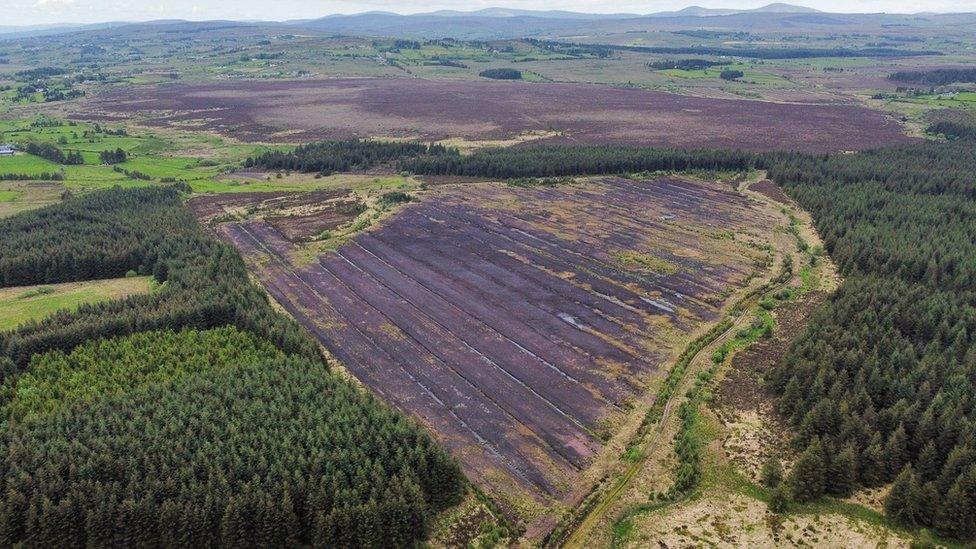Haughey's Bog: Why are peatlands important for environment?
- Published
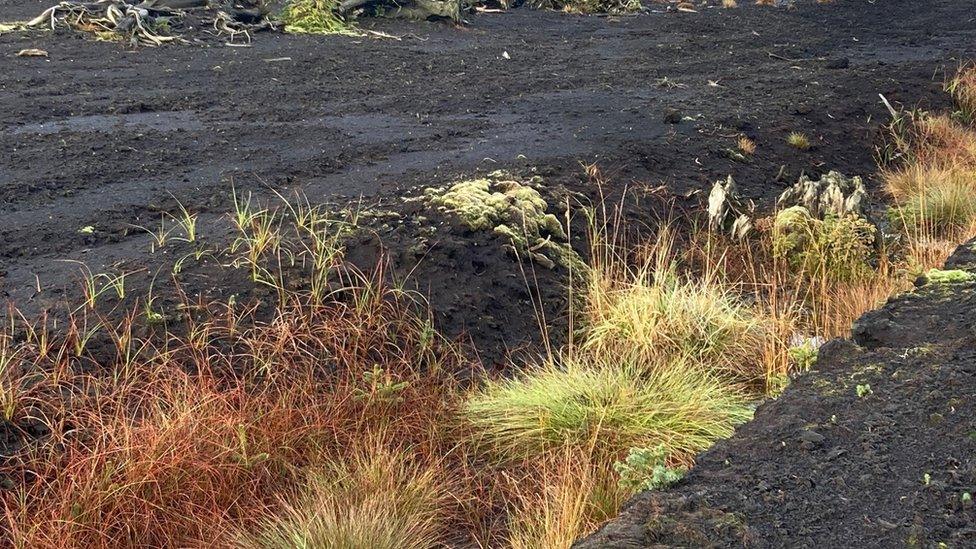
Haughey's Bog is a former commercially-harvested bog near Omagh, Country Tyrone
Haughey's Bog in County Tyrone is the latest peatland in Northern Ireland to begin the journey to restoration.
Peatlands cover just 3% of the earth's land surface and they make up 12% of the land area of Northern Ireland.
When peaty soils are taken into consideration, a quarter of Northern Ireland is covered, mainly in the north and west, but 86% of peatlands in NI are in a degraded state.
That is a problem for the environment, as peatlands perform many functions.
BBC News NI has looked at some of its attributes.
Storing carbon
At Haughey's Bog, before it was commercially exploited, as much as 10,000 years of peat was locking away carbon generated in that time.
Once it was drained to cut fuel and later compost, it became part of the carbon problem for Northern Ireland.
When they dry out, peatlands cannot lock away - sequester - carbon in their depths.
And they start to emit it.
That is why the first stage of restoring a peatland is building up the water table - blocking drains to prevent water escaping and allowing the ground to get wet again.
At Haughey's Bog, the water table is being regularly measured by Ulster Wildlife staff to establish a baseline from which to assess levels.
All about water
As well as storing vast amounts of carbon in their soggy depths, peatlands also filter water.
NI Water has used them in the Garron Plateau in County Antrim to filter water for extraction.
That has shown the potential of nature's solutions to some of our challenges.
Reservoirs in the Sperrins and the Mournes also benefit from peat filtering.
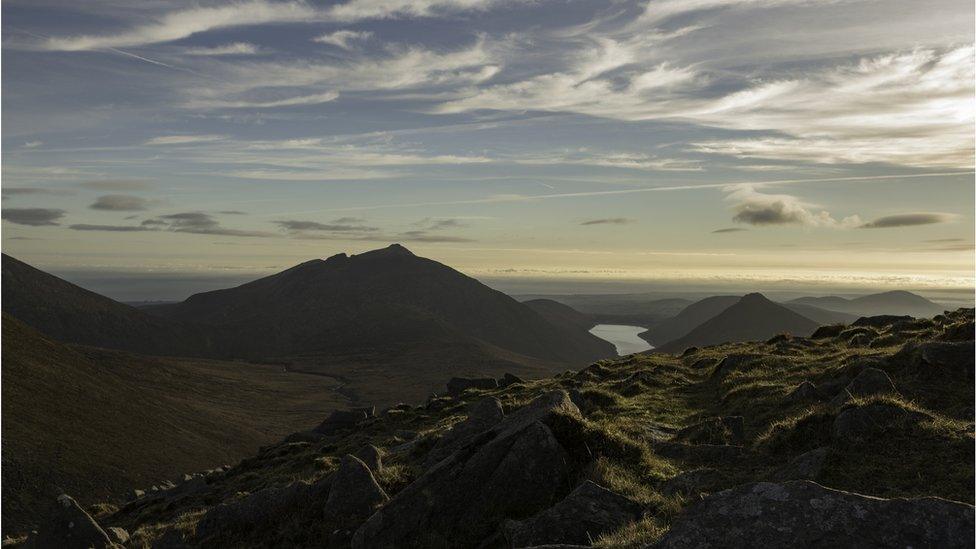
There is peat in parts of the Mourne Mountains in County Down
The cleaner, clearer water helps reduce costs associated with removing organic matter from peat-stained water.
Peatlands also help slow the flow of rainwater during heavy downfalls, which can prevent flooding.
Biodiversity and habitat
Peatlands are also important for biodiversity and habitat.
As well as the bog flora they support - heathers, peat-forming sphagnum moss, fungi - they provide specific habitat for wildlife.
Some of that wildlife, like the curlew, is endangered or vulnerable.
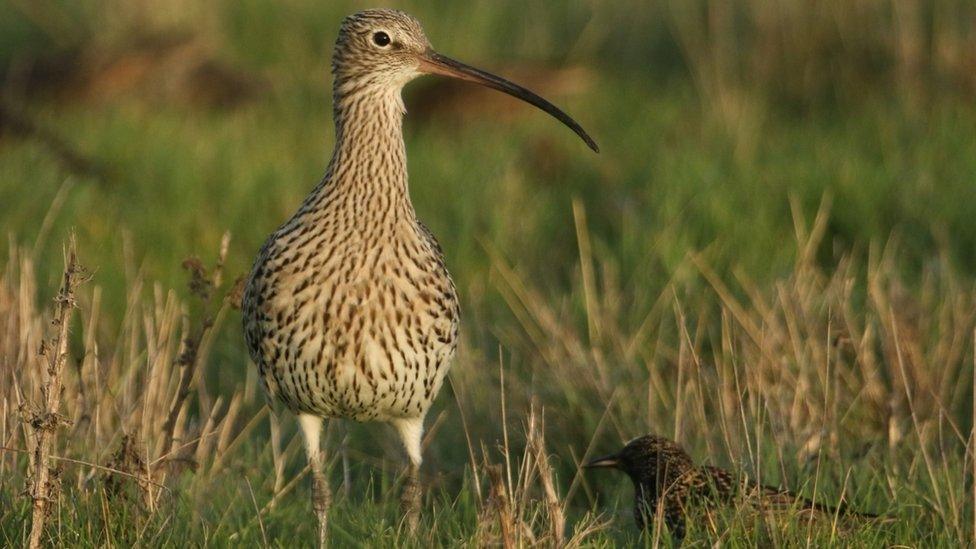
Once a common sight in Northern Ireland, the curlew has declined by 82% since 1987
And habitat loss and destruction has played a part in that.
So restoring habitat will help to bring the various species back.
Archaeology
Haughey's Bog was an ancient pine forest and the remains of the trees that covered it have emerged during the years the peat was removed.
Peat is a good medium for preservation and it can give scientists an insight into how an environment has changed through its layers.

Cores removed from a peat bog in County Antrim revealed facts about human life 1,000 years ago
Taking core samples and carbon-dating them can help scientists decipher how the climate has changed over thousands of years.
Protection
The Department of Agriculture, Environment and Rural Affairs has consulted on a peatlands strategy, but it cannot proceed without sign-off from a Stormont minister.
In Ireland, the sale of peat as fuel has been banned.
But families living near bogs could continue cutting peat - or turf - for private use.
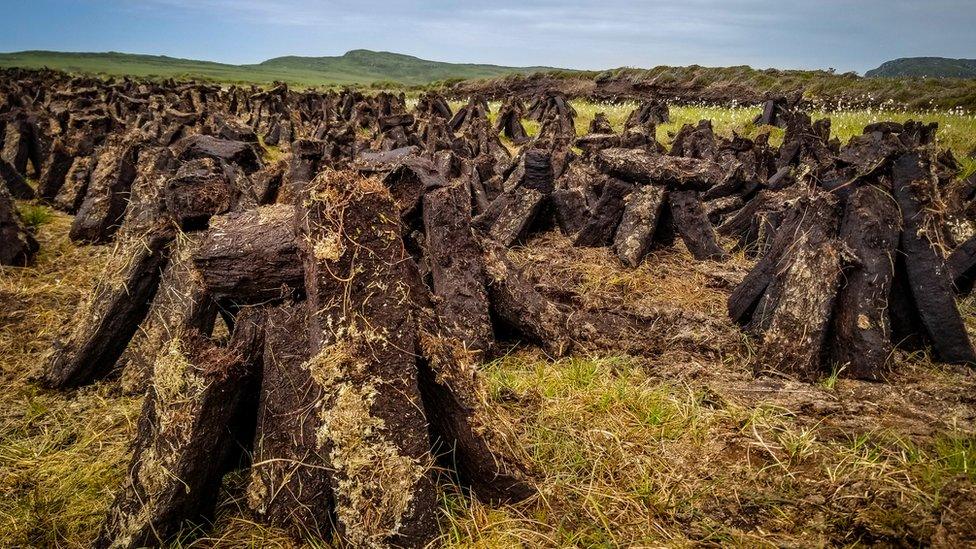
The Irish government introduced a ban on the sale of turf used as fuel last year
In England, a ban on selling peat for use as garden compost should have been introduced next year.
But it has been pushed back to 2027 for some products and 2030 for some professional users.
Conservation and wildlife charities say that does not reflect the value of peatlands.

What are peatlands?
There are three different types of peatlands.
Blanket bog is one of the most extensive semi-natural habitats in the UK and Ireland. That's in contrast to the rest of the world, where they are restricted to cool, wet climates. They primarily form in upland areas and the thickness of peat can vary between 1m and 6m. Blanket peat began to form in Ireland about 5,000 years ago.
Lowland raised bogs began to form in Ireland about 10,000 years ago, at the end of the last ice age. They are located in low-lying areas, like river valleys. The plants that grow here, like heather and sphagnum mosses, die to form peat that can accumulate up to 12m.
Fens covered large areas some 7,500 years ago. They form in poorly-drained places and most of them subsequently evolve into lowland raised bog by natural succession.

Related topics
- Published6 May 2022

- Published13 November 2022

- Published8 November 2023
